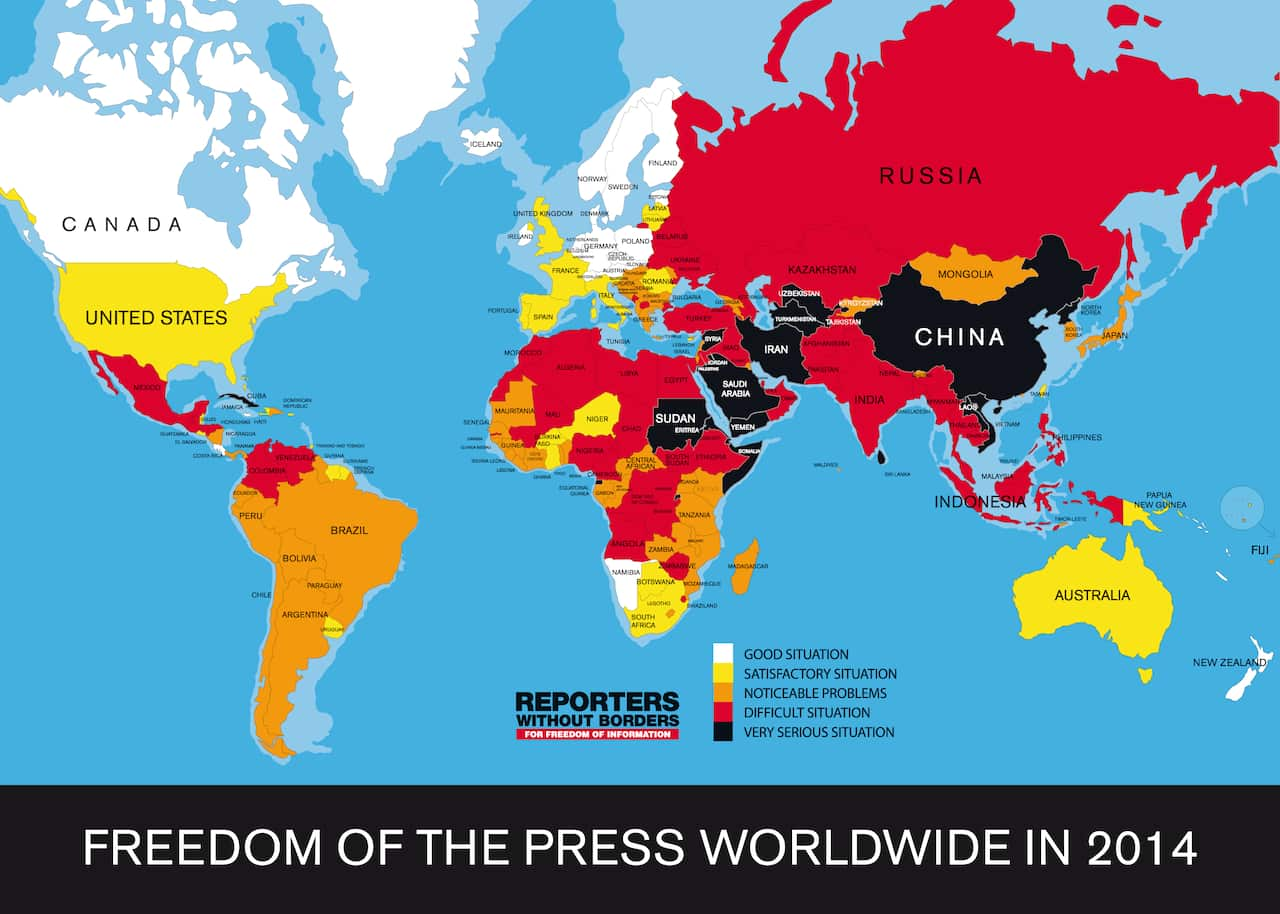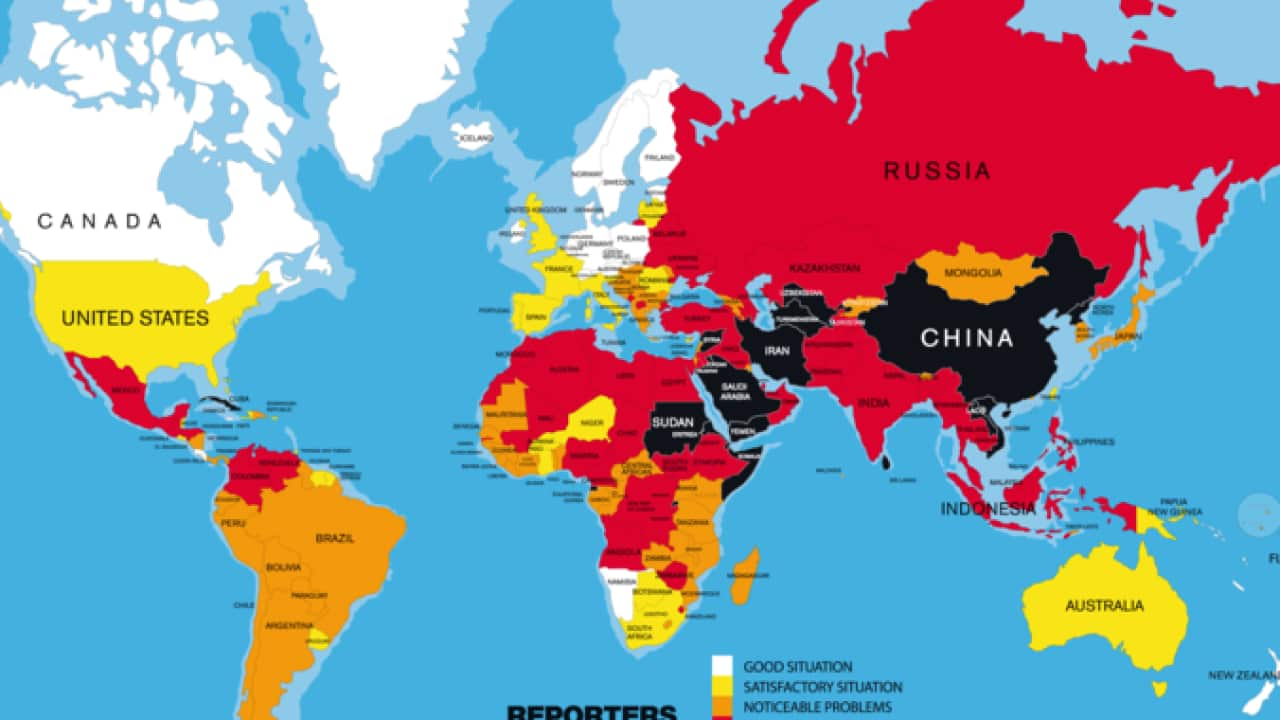- Charlie Hebdo attack: Latest updates on Paris shooting attack
- Charlie Hebdo's brazen defiance: A history of the French satire magazine
More than 1,200 journalists and media workers have died doing their work since 1992.
That includes about 1,110 journalists who were murdered, shot in crossfire or killed on a dangerous assignment, and includes the journalists who were killed in the French magazine attack.
Another 428 journalists may have died in relation to their work, but the Committee to Protect Journalists could not determine a motive.
The committee keeps a database of journalists and media workers who were murdered, shot in crossfire or died on a dangerous assignment.
Between 1992 and 2014, 1100 journalists were definitely killed because of their work. 725 were murdered, 228 were killed in crossfire and another 144 were killed on dangerous assignments.
France is not a country usually considered dangerous for journalists.
Charlie McNair, Professor of Journalism, Media and Communication at Queensland University of Technology, said the intention of attacks like the Charlie Hebdo attack was partly to gain media attention.
"The message is, 'we will get you'," Professor McNair said.
"[Also] partly to punish the organisation."
This attack, and the beheadings of journalists in Iraq and Syria, were designed to attract media attention and spread terror, he said.
The attack at the Charlie Hebdo office, where staff and two police officers died, has raised questions over media freedom and freedom of expression.
France is a relatively good country for media freedom, ranked (39 from 180 countries), losing two spaces since 2013.
In terms of press freedom, Australia has also lost two places since 2013, which was ranked 26 from 180. The treatment of journalists in Egypt has been highlighted recently with the incarceration of Al Jazeera journalists Peter Greste, Mohammed Fahmy and Baher Mohammed.
The treatment of journalists in Egypt has been highlighted recently with the incarceration of Al Jazeera journalists Peter Greste, Mohammed Fahmy and Baher Mohammed.
This map shows press freedom around the world, from Reporters Without Borders.

Share

